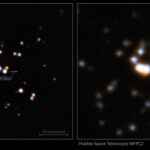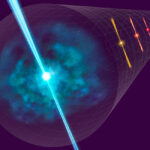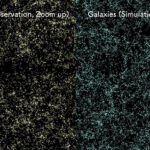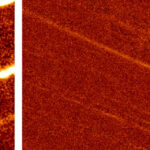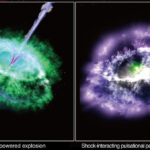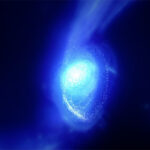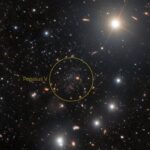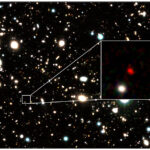This Universe’s most massive star just said “cheese!”
Located in the Tarantula Nebula at about 160,000 light-years from us, R136a1 is the most massive star we know across the whole Universe. Using the Gemini South telescope in Chile, astronomers recently managed to get the sharpest image ever made of the gigantic star. The image suggests that maybe such…
What’s like The Sun and The Earth – only Redder and Heavier?
Astronomers have discovered a super-Earth – planets that are much like our Earth but heavier – near the habitable zone of a red dwarf star, only 37 light-years from us. That's really really close to our planet in astronomical terms! Schematic diagram of the newly discovered Ross 508 planetary system.…
Explosions help us measure distances in the Universe
How do astronomers measure large distances in the far away corners of the Universe? An international team led by Maria Dainotti – an Assistant Professor at the National Astronomical Observatory of Japan (NAOJ) – has just found a new way to do it. Conceptual image of this research: using Gamma…
Artificial intelligence helps astronomers see farther and sharper
To understand the evolution of the Universe, astronomers use many complex equations. Because there are some things that we do not know for sure yet, scientists have to estimate some of the values in these equations – such values come from different simulations, and the best ones match real-life observations…
A Comet Breaking-Up
For the first time, astronomers captured images of a strange rocky comet, breaking apart as it went closer to the Sun. Meet 323P/SOHO – a comet that orbits the Sun nearly every years, just like the Earth goes around the Sun every year. Astronomers have discovered just a few like…
A cosmic fairy tale and a discovery
Have you ever heard of the beautiful story of Tanabata? It is much loved and celebrated in Asian cultures such as the Japanese – and has a lot to do with a recent discovery. Tanabata is the story of two lovers, Orihime and Kengyu, who can only meet at the seventh…
An ancient merry-go-round
Astronomers have found that very old galaxies can twirl, too. There are signs of rotation in a galaxy which existed just 500 million years after the Big Bang. This is the earliest galaxy with possible rotation! This ancient galaxy rotates more slowly than modern galaxies – maybe it is on…
Citizen scientist makes an ultra-cool discovery
Using data from the NOIRLab's Community Science and Data Center, ace citizen scientist Frank Kiwy discovered 34 ultracool dwarf binary systems in the Sun’s neighbourhood. This means that we now know twice as many of these systems than before! Illustration of an ultracool dwarf with a companion white dwarf. Credits:…
A fossil galaxy in the outskirts of Andromeda
An international team of astronomers found a dwarf galaxy in the outskirts of the Andromeda Galaxy – located over million light-years from us. The ultra-faint dwarf galaxy, Pegasus V, was spotted by a very attentive amateur astronomer looking at data in an image from the DESI Legacy Imaging Surveys. He…
A red needle in a haystack
A team of astronomers has found what could be the most distant galaxy ever spotted. Named HD1, it is about billion light-years away – which is to say it is quite close to the 14 billion year old Big Bang. The finding shows that bright systems like HD1 can be…

